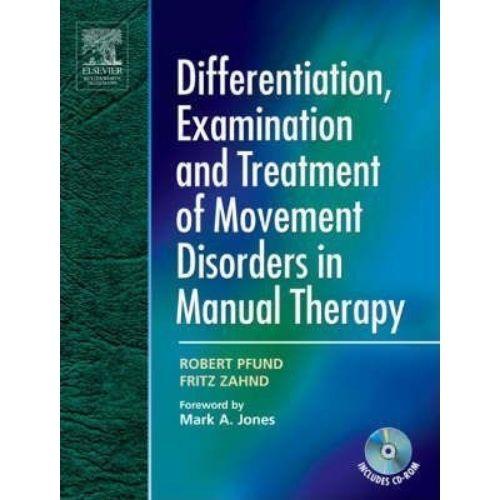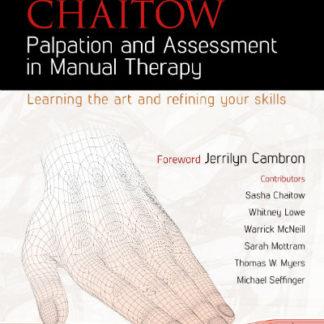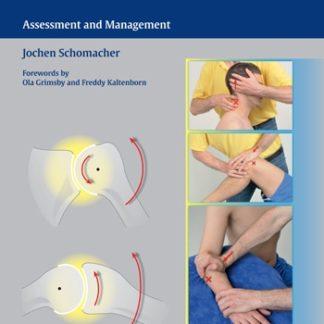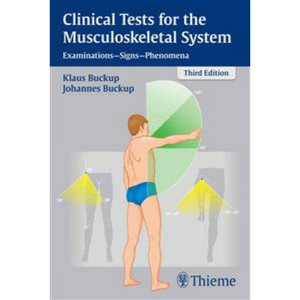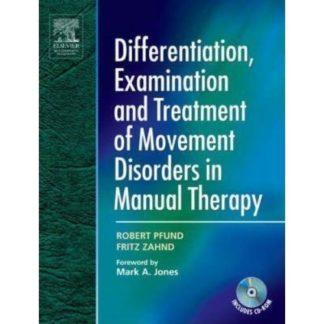Kuvaus
Differentiation, Examination and Treatment of Movement Disorders in Manual Therapy
This innovative text and CD-ROM by Pfund and Zahnd is the first of its kind. The authors have produced a resource that successfully integrates principles of manual therapy examination and management with superb video images of procedures. The format of text combined with video provides unparalleled opportunity to learn both the underlying clinical reasoning and the technical execution of the selected manual therapy procedures. As evident throughout this book, contemporary manual therapy is multidimensional in its focus, inclusive of concepts and procedures from historically different approaches, and guided by clinical reasoning that is critical, reflective, open-minded and collaborative. In recognition of the biopsychological continuum with which patient presentations present, the authors set the scene by discussing the key concepts related to pain mechanisms. The procedures and associated reasoning within the book is then put forward as being appropriate for a pain state that is judged to be predominantly nociceptive. This is a critical clarification typically not addressed in manual therapy texts.
It enables and even encourages therapists to appreciate the significant impact psychosocial circumstances can have on patients’ presentations and places the procedures covered in the book in to a specific context of relevance. The procedures featured through the book are not put forward as the answer to all upper quarter pain states, rather they are recommended for use when the patient’s disability and associated impairments are hypothesised to be emanating from the somatic or neurogenic tissues capable of eliciting such symptoms. The multidimensional focus of this book is also evident through its inclusion of joint, neural and muscle/soft tissue system examination and management procedures. The authors share a wealth of academic and clinical experience that is grounded in the biomedical sciences and practiced through an integrated, reasoning-based approach born out of their initial Orthopaedic Manual Therapy Kaltenborn and Evieath training and further developed through inclusion of theory and procedures from other manual therapy approaches.
A unique product of the authors’ strong science and clinical base is their integration of this knowledge in guiding the clinical reasoning associated with their recommendations for selection and progression of procedures. Readers are encouraged to consider the underlying physiology reflected in the patient’s presentation with particular regard to the stage of tissue healing. This biomedical judgement is then balanced with attention to the specific characteristics of the physical impairments identified to form a hypothesis on which treatment selection and progression can be based. Guidelines and not recipes are suggested. A particular strength of this book is its capacity to assist readers’ continued development of their own clinical reasoning. Clinical reasoning, or the thinking and decision making associated with clinical practice, requires an organization of knowledge that is contemporary with clear links to its clinical significance. The biomedical theory covered at the start of this book reflects the current state of knowledge in these topics with detailed discussion of the associated clinical implications.
Readers’ organization of clinical knowledge is then further promoted through the presentation of differentiating physical examination procedures available to narrow down the incriminating physical impairment of a given disability. In addition to its ability to promote clinical reasoning and not simply examination and management procedures, a feature of this book that the authors must be congratulated for including is its attention to self-management. Patient self-management is essential for long-term success with manual therapy. As implied through this book, manual therapy examination and initial treatments are critical to advance the hypotheses formed through the subjective examination. Skilled assessment of physical dysfunction enables therapists to determine the principle impairments and hypothesise to some extent about the source of the symptoms and factors contributing to the development and maintenance of the patient’s disabilities and impairments.
Once the pain mechanisms have been established to be predominately nociceptive and the disabilities and associated impairments analysed, trial treatments directed toward improving or correcting those impairments then serve as a further test of the evolving hypotheses regarding the source and cause of the patient’s physical problems. Here the authors take their book to another level by including specific self-management procedures directed to the specific impairments identified through the differential examination. The visual and auditory presentation of these self-management procedures through videotape then provides the reader with a unique learning opportunity whereby they can immediately switch between examination and management, including self-management, procedures to reinforce their understanding and application. While not specifically referred to as such, this represents a collaborative approach to clinical reasoning. That is, the authors promote a view that patients should not be passive recipients of health care.
Instead, through a process of collaboration, therapist and patient reach a shared understanding of the problem that includes a shared responsibility for the management. While the patient may rely on the therapist to establish the nature of the problem and the management recommended, the therapist then relies on the patient to participate through self-management. Self-management includes preparedness to consider and learn new health beliefs and behaviours and to continue with self-management physical exercises as demonstrated throughout the book. The interactive and flexible presentation of this book/CD-ROM along with the philosophy of promoting therapists’ clinical reasoning and patient self-management provide an effective application of adult learning that should foster readers’ deeper understanding of the theory discussed and procedures demonstrated. Readers are certain to learn much from this book and like me will look forward to the release of its companion volume on the lower quarter.
